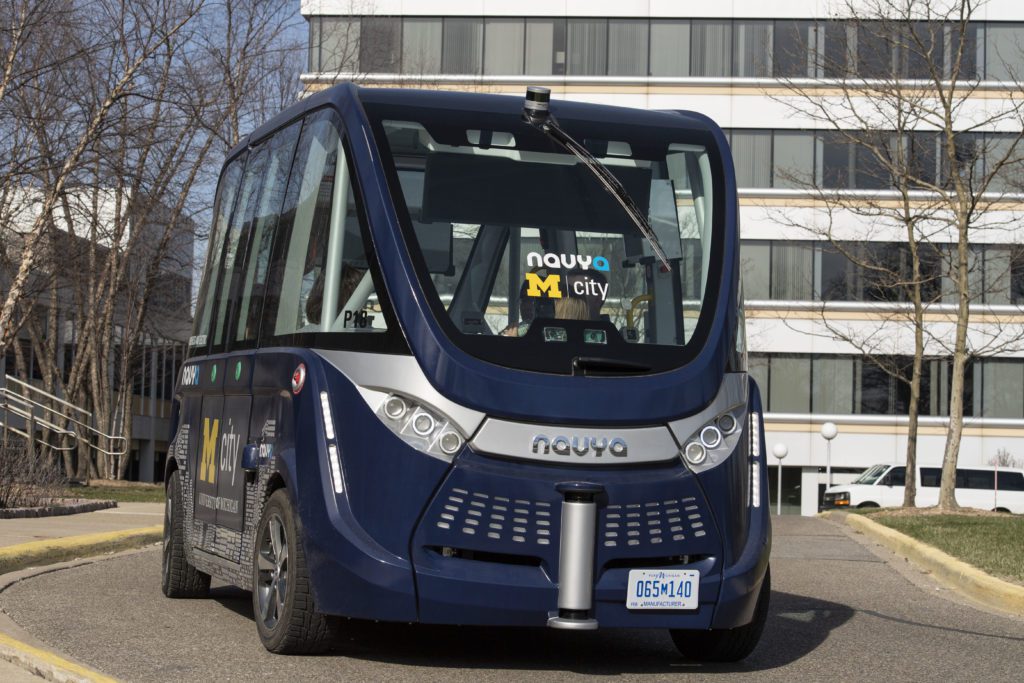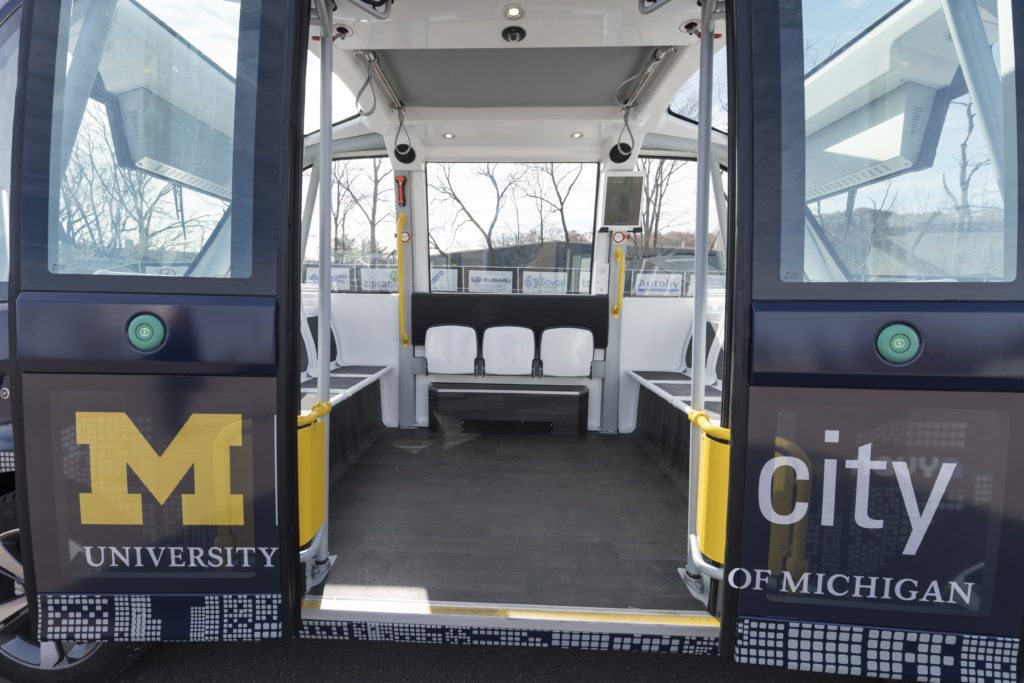Mcity Shuttle Resources
White Paper
Mcity Driverless Shuttle research project results are detailed in a white paper that includes the findings of J.D. Power’s consumer survey of people who interacted with the shuttle — passengers, pedestrians, bicyclists and drivers of other vehicles — and how that experience impacted their trust and acceptance of automated vehicle technology. The paper also reviews the safety and operating protocols that led to a safe and successful project.
Case Study
The primary goal of the shuttle research project was to understand human acceptance, trust, and behavior when riding in a driverless shuttle or interacting with one on the road. This case study documents our experience getting ready to launch the Mcity shuttle. We hope others considering similar shuttle services can benefit from what we learned.
Signage
For organizations launching a driverless shuttle program
Currently, there are no defined federal, state, or local regulations for signage along a driverless vehicle route. Download these graphics used for signs on the Mcity Driverless Shuttle route.

